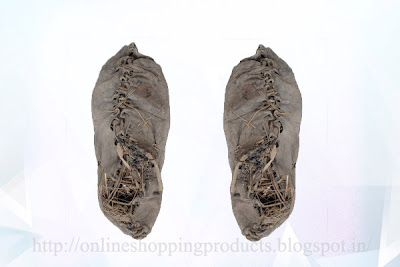
Still, the world's oldest known leather shoe, exposed Wednesday, struck one of the world's best known shoe designers as reprehensibly au courant. "It is astonishing," Blahnik said via email, "how much this shoe resembles a current shoe!"
Stuffed with grass,
maybe as an insulator or an early shoe tree, the 5,500-year-old moccasin-like shoe was found very well preserved thanks to a surfeit of sheep dung during a recent dig in an Armenian cavern.
About as big as a current women's size seven (U.S.), the shoe was probable tailor-made for the right foot of its owner, who could have been a man or a woman not sufficient is known about Armenian feet of the era to say for sure.
Made from a single piece of cowhide a system that draws premium prices for modern shoes under the designation "whole cut" the shoe is laced next to seams at the front and back, with a leather twine.
The hide had been cut into two layers and brown, which was probably quite a new technology, explained Ron Pinhasi, co-director of the dig, from University College Cork in Ireland.
Yvette Worrall, a shoemaker for the Conker handmade shoe company in the U.K., added, I'd imagine the leather was wetted first and then cut and fixed around the foot, using the foot as a last [mold] to stitch it up there and then.
The end result looks astonishingly familiar for something so ancient and not just to Blahnik.
It directly struck me as very similar to a customary form of Balkan footwear known as the opanke, which is still worn as a part of local dress at festivals today, says Elizabeth Semmelhack, a curator at the Bata Shoe Museum in Toronto, Canada.
He thought, Wow, not so much has distorted. Oldest Leather Shoe Shows dramatic Preservation
Radiocarbon dated to about 3500 B.C., during Armenia's Copper Age, the primitive shoe is compacted in the heel and toe area, likely due to miles upon miles of walking. But the shoe is by no resources damaged out.
Shoes of this age are very rare, because leather and plant materials usually degrade very quickly.
But in this case the contents of a pit in the cave, dubbed Areni-1, had been preserved in by some layers of sheep dung, which accumulated in the cavern after its Copper Age person population had gone.
The cave setting kept it cool and dry, while the dung paved the finds in, told Pinhasi, lead author of the new study, published by the periodical PLoS ONE Wednesday.
Categories:
Latest news about Leather,
World's Oldest shoe




